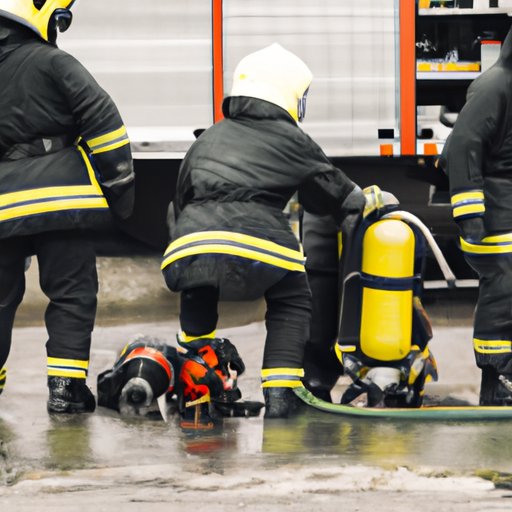Understanding PFAS Health Risks for Firefighters: A Comprehensive Guide
Firefighters encounter numerous hazards, with PFAS (per- and polyfluoroalkyl substances) being one of the less visible yet significant threats. These chemicals, prevalent in firefighting foams like AFFF (Aqueous Film Forming Foam), pose serious health risks. Understanding these risks is essential for firefighters nationwide.

What Are PFAS and Why Are They Dangerous?
PFAS are synthetic chemicals used across various industries, including firefighting, due to their resistance to heat, water, and oil. This makes them effective in AFFF for combating fuel-based fires. However, PFAS are dubbed "forever chemicals" because they persist in the environment and accumulate in the human body over time.
The primary concern with PFAS is their potential to cause health problems. Research links PFAS exposure to severe conditions such as cancer, liver damage, and hormonal disruptions. Firefighters, who frequently use AFFF, are particularly at risk. The lack of immediate symptoms complicates addressing the long-term effects of PFAS exposure.
How Are Firefighters Exposed to PFAS?
Firefighters are primarily exposed to PFAS through AFFF during training and emergency responses. This exposure can also occur via contaminated gear and equipment. In settings like municipal fire departments and military bases, the use of AFFF has resulted in significant PFAS exposure.
Many firefighters were not informed about the dangers of PFAS in AFFF. Without proper protective gear and decontamination processes, firefighters have faced increased risks of health issues.
What Health Risks Are Associated with PFAS Exposure?
According to the Environmental Protection Agency (EPA, 2024), PFAS exposure is linked to several health problems:
- Cancer: Increased risk of kidney, testicular, prostate, and bladder cancers.
- Endocrine Disruption: Interference with hormonal functions, potentially leading to thyroid disease.
- Liver Damage: Elevated liver enzymes and potential liver disease.
- Immune System Compromise: Reduced vaccine response and increased risk of infections.
These risks underscore the importance of awareness and prevention of PFAS exposure among firefighters.
What Can Firefighters Do If They Suspect PFAS Exposure?
If you suspect PFAS exposure, seek medical evaluation and document your health history and exposure incidents. Consult healthcare professionals knowledgeable about PFAS-related health issues for appropriate testing and monitoring.
Can Firefighters Receive Compensation for PFAS-Related Illnesses?
Firefighters who develop health issues due to PFAS exposure may be eligible for compensation from AFFF manufacturers or other responsible parties. Legal guidance is essential for navigating these complex claims.
Are There Alternatives to AFFF for Firefighting?
Yes, PFAS-free firefighting foams are available. Fire departments are encouraged to explore these alternatives to reduce PFAS exposure risks.
How Can Fire Departments Reduce PFAS Exposure?
Fire departments can minimize PFAS exposure by implementing proper decontamination procedures, using personal protective equipment, and transitioning to PFAS-free foams. Regular training on PFAS risks and safety measures is also crucial.
What Are the Long-Term Health Monitoring Recommendations for Firefighters?
Firefighters exposed to PFAS should undergo regular health monitoring to detect early signs of related health issues. This includes routine blood tests and screenings for cancers and other conditions associated with PFAS exposure.
Take Action to Protect Your Health and Rights
Understanding PFAS health risks is vital for firefighters and their families. If you or a loved one has been exposed to PFAS, take steps to protect your health and legal rights. Seek medical advice, document your exposure, and consult with legal professionals experienced in PFAS litigation to explore compensation options.
Firefighters across the United States deserve protection and justice for the risks they face. Staying informed and taking action can help safeguard your health and secure any compensation you may be entitled to.


